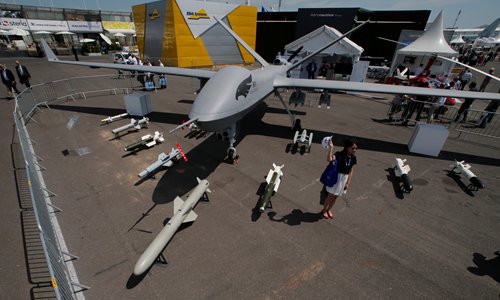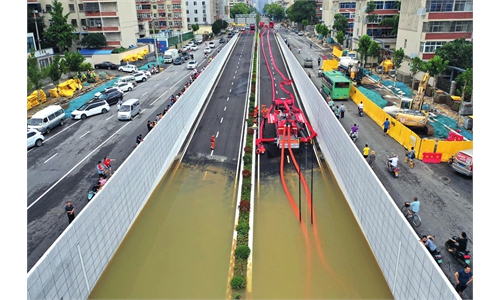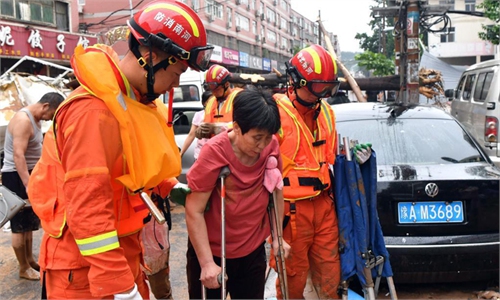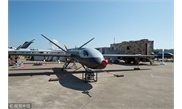
Chinese UAV Wing Loong II is seen on the static display during the 52nd Paris Air Show at Le Bourget Airport near Paris, France June 20, 2017. Photo:Pascal Rossignol/CFP
"Folks in Henan! Wing Loong unmanned aerial vehicle is here for you." Residents in Mihe county, Central China's Henan Province, whose telecommunications were cut off due to record downpours and floods on Tuesday, regained connection on late Wednesday night with the aid of China's home-produced UAV dispatched to hover above the region.Widely known as an armed reconnaissance drone for military purposes, the Wing Loong is also an ideal choice in civilian missions like disaster relief, serving as an aerial communications relay platform, experts said.
Mihe county in provincial capital Zhengzhou was flooded by two rivers on Tuesday, leaving over 20,000 residents stranded.
As of 8 pm on Wednesday, base stations in the air connected a total of 2,572 users, generating traffic of 1,089.89M, with the maximum number of users for single-time access reaching 648, the Global Times learned from the Aviation Industry Corporation of China (AVIC), the makers of the Wing Loong.
The drone traveled around 1,200 kilometers in four and a half hours to arrive in the mission area, and operated for eight hours there.
It provided local residents with much needed information of disaster relief, and allowed them to reconnect with their families and loved ones, guaranteeing an emergency lifeline.
The drone also used its synthetic aperture radar to conduct a geological hazard survey and provided imagery data to help the analysis of the disaster situation.
On Thursday around noon, the Wing Loong-2H took off again from Guizhou Province and headed for the Fuwai Central China Cardiovascular Hospital in Zhengzhou, which was the worst flooded hospital in the city. The drone will provide network services for emergency rescue work in the hospital.
The Wing Loong-2H emergency-response UAV is a national emergency communication force powered by AVIC for the Ministry of Emergency Management.
It can restore 50 square kilometers of mobile public network and establish an audio and video communication network covering 15,000 square kilometers.
It is capable of realizing network connection for images, voices, and data messages through aerial networking, high-point relay and other technologies, to provide timely assistance to disaster areas.
The UAV system is the country's new hi-tech force for emergency response and disaster relief, AVIC told the Global Times in a statement on Thursday.
"It has the characteristics of long range, long endurance, large carrying capacity, and high adaptability to various environments," the statement said, adding that it can complete multi-spectrum disaster site investigation under extreme conditions. Apart from providing public and private network communications, it can also deliver emergency materials to affected regions.
The Wing Loong can serve not only military purposes as an armed reconnaissance drone, but also civilian purposes when equipped with correspondent payloads for emergency communications and geological survey instead of weapons, Song Zhongping, a Chinese expert on aerospace and military, told the Global Times on Thursday.
It is a product of military-civilian integration with technologies eventually used to serve the people and national security, Song said.
The Wing Loong can stay in the air for a long time because it is designed to carry out reconnaissance missions over a long distance and strike time-sensitive targets by maintaining presence above them, analysts said, noting that this is the same concept when it comes to communications relay in disaster relief missions.
Drones are not the only military equipment China has used to save people, with other examples being military helicopters used in earthquake rescues and transport aircraft used in fighting COVID-19.




